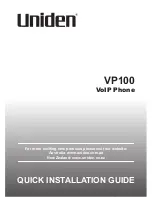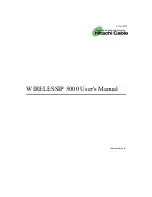
Product Description
IP Office 8.1
© 2012 AVAYA All rights reserved.
Page 153
Issue 26.k.- (16 August 2012)
DECT Feature Overview
Given the degree of integration available to wireless users with DECT, there are a variety of means by which
calls can be routed to wireless handsets:
·
Handover
While in motion, the handset performs continuous measurements to determine which DECT R4 base
station has the strongest signal. The one that can be best received is defined as the active Base
station. To prevent the handset from rapidly switching back and forth between two base stations that
are equally well received, threshold values are used. Handover between base stations occurs
seamlessly whether a call is active or not.
·
DECT Networking
An DECT R4 telephone can travel from one office to another which is connected over a wide area
network (WAN) link and make and take calls. In this scenario the main DECT R4 controller remains at
one "headquarters" location, with slave base stations in up to 31 other offices.
·
DDI/DID
Since each wireless handset is an extension on the IP Office system calls may be routed directly using
a DDI/DID number.
·
Transfer
Calls may be transferred to DECT extensions by operators or other extension users and DECT
extension users may transfer callers to any other extension user.
·
Hunt group compatibility
Wireless handsets may be programmed as members of groups and answer calls in the same manner
as any other extension within that group.
·
Group working
Wireless handsets may be programmed as members of groups and attract calls in the same manner as
any other extension within that group. DECT handsets must NOT be configured into collective groups.
·
Divert destination
Users may initiate any or all diverts from an Avaya desk phone to a wireless handset.
·
Twinning
Twinning allows calls to a user main extension number to alert at both that extension and a secondary
extension. Though not restricted to DECT, this feature is aimed primarily at users who have both a
desk phone and a wireless extension. Calls from the secondary twinned extension are presented as if
from the user's main extension. Presentation of call waiting and busy is based on whether either of the
twinned extensions is in use.
·
DECT R4 Capacities:
Feature
DECT R4
Maximum Handsets
120
Maximum Base Stations if Master Server is on a standard RBS
32
Maximum Base Stations if Master Server is on a Compact RBS
5
Total Base Stations/Compact Base Stations
32
Total number of Compact Base Stations
5
Maximum simultaneous calls
100*
*May be limited by the available VCM voice compression channels for calls to non-IP destinations.
DECT R4 on IP Office does not support Redundancy option.
·
Redundancy
DECT R4 on IP Office does not support Redundancy option.
·
Licensing
Other than IP-DECT, DECT R4 does not require any licensing by itself (next to the licensing for the
appropriate VCM channels in IP Office). However, a valid SARI license is required and must be
ordered.
For each DECT handset one Avaya IP Endpoint license is required. In addition, one SARI Certificate is
required for each DECT R4 system to uniquely identify that DECT R4 System. The SARI is printed on
paper and must be ordered separately. This applies for regular IP Base Station as well as IP DECT
Gateway type of deployments.
















































